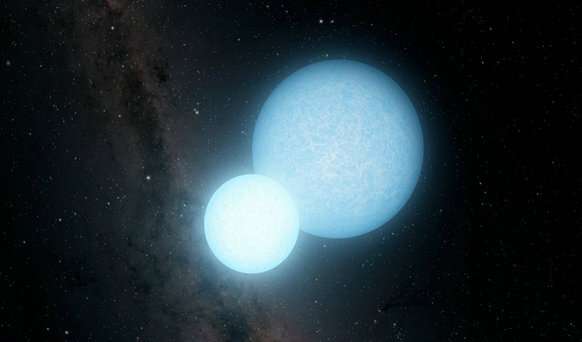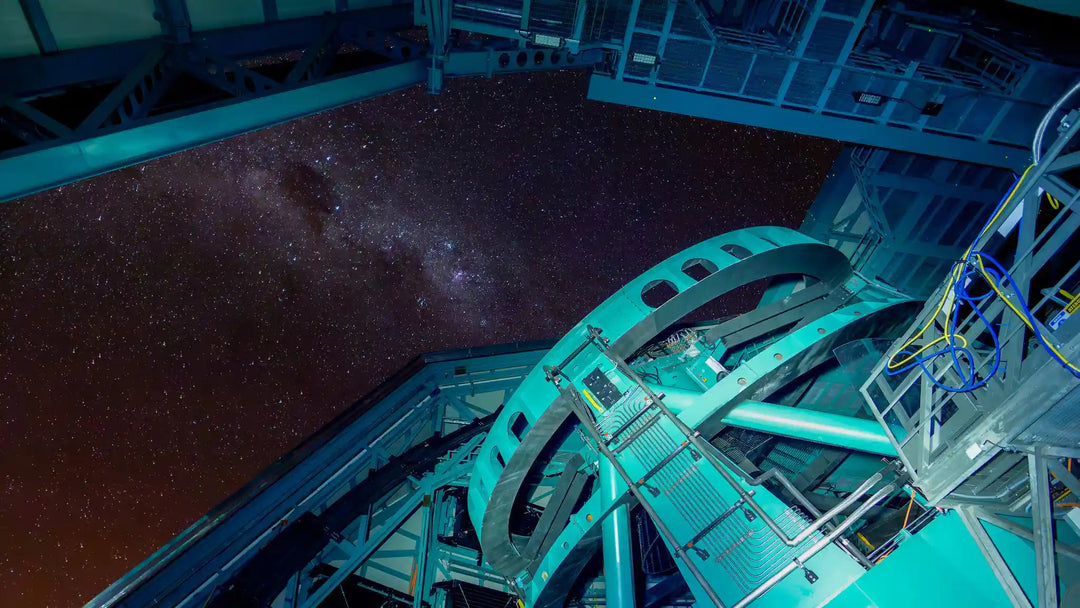LAMOST discovered pre-low-mass white dwarf binary

Chinese astronomers from the National Astronomical Observatories of Chinese Academy of Sciences (NAOC) have used spectroscopic data from LAMOST and P200/DBSP and multi-band photometric data from Catalina and Zwicky Transient Facility to discover a binary system containing an extremely low-mass (ELM) white dwarf (WD) progenitor and a compact invisible companion. The system challenges the current formation theory of ELM WDs since the visible star, a pre-ELM WD, has a mass of about 0.09 solar masses, which is lower than the theoretical limit of its species. What impact might this have on our perception of the Universe?
What is White Dwarf?
Most stars in the universe will end their lives as white dwarfs, with carbon-oxygen white dwarfs (CO WD) being the most common.
But that's not all:
- When the mass of a star is greater than 1.4 solar masses, the white dwarf will continue to collapse into a neutron star.
- White dwarfs between 0.33 and 0.5 solar masses can have cores dominated by either CO or Helium (He).
- A white dwarf with even lower masses, known as ELM WD, is composed of degenerate He.
ELMs are formed within interacting binary systems. The formation of such single low mass He WDs via the single star evolution channel requires a correspondingly very low initial mass and an extremely long evolution time.
Read more:
- The Pale Blue Dot Photo: History, Significance, and Legacy
- Pale Blue Dot Image: What About Large Format Prints like Fine Art?
- The Earthrise Photo: A Journey Through Earth’s Iconic Space Portrait
- Hubble Telescope Captures a Stellar Trio: The Dawn of a Sun-like Star
- James Webb Space Telescope uncovers young stars in NGC 346’s dusty ribbons
Enceladus holds potential for alien life with recent discovery of vital element
JADES-GS-z14-0: NASA's JWST Discovering the Most Distant Galaxy
Anticipating the celestial show – Betelgeuse's potential supernova event
Supernova 2020eyj: First radio signal from the massive explosion of a dying white dwarf
Extremely Low-Mass White Dwarf (ELM WD): puzzling object
The binary system's invisible compact component is more likely to be a White Dwarf, but a neutron star cannot be ruled out. The ELM binary systems with compact companions may be continuous gravitational wave sources, making them among the most revealing objects in the gravitational wave detection project.
According to Dr. Yuan Hailong, lead author of the study: the pre-ELM White Dwarf appears to be a typical F-type dwarf star that orbits an invisible companion every 5.27 hours.
He believes it have just finished its mass-transfer phase and is slowly making its way to the white dwarf cooling path.
Despite its constant luminosity, the energy of the pre-ELM-WD is provided by a small hydrogen shell that burns outside the degenerate He core.
However, its dynamical mass is a mere 0.09 solar masses, which is below the theoretical lower limit, making it a unique discovery.
The system's mass was estimated using a combination of multi-band time-domain photometric and spectroscopic data and Gaia parallax. Even after accounting for all possible errors, the estimated mass is still notably low. The team tested several theoretical models, but none could accurately explain the results.
This discovery raises questions about the current ELM formation mechanism that remains unanswered.
What is LAMOST?
Positioned in Xinglong, China, the Large Sky Area Multi-Object Fiber Spectroscopic Telescope (LAMOST), also referred to as the Guoshoujing Telescope, serves as a significant national research facility for astronomical science.
- LAMOST distinguishes itself as an ingenious telescope that combines large-aperture with a wide field of view (FOV) to facilitate in-depth astronomical spectroscopic surveys.
- From 2011, LAMOST has examined over 10 million celestial bodies within our Galaxy, resulting in the generation of the largest known spectroscopic dataset.
The valuable data obtained from LAMOST has significantly evolved our astrophysical understanding in several areas, encompassing stars, the Milky Way, exoplanets, and black holes.
Check also:
AT2018fyk: the star survives a close encounter with a black hole only to meet it again
First known binary system composed of two Y-type brown dwarfs
Magellan shows volcanic activity on Venus – VERITAS mission to investigate
Summary
The discovery is an important milestone for the LAMOST compact object search project, proving its ability to study ELMs. With more time-domain plates expected to come in during LAMOST's second regular five-year survey, more interesting compact binary systems are expected to be discovered.
References
- Hailong Y., ELM of ELM-WD: An Extremely-low-mass Hot Star Discovered in LAMOST Survey, The Astronomical Journal, Volume 165, Number 3, doi: 10.3847/1538-3881/acaf07, [26.04.2024]
- Hailong Y., et al., Orbital parameters for an ELM white dwarf with a white dwarf companion: LAMOST J033847.06+413424.2, Monthly Notices of the Royal Astronomical Society, Volume 526, Issue 4, December 2023, Pages 5471–5482, https://doi.org/10.1093/mnras/stad3100, [26.04.2024]
- Hongliang Y., et. al., Overview of the LAMOST survey in the first decade, https://doi.org/10.1016/j.xinn.2022.100224, [26.04.2024]
- Nannan Z., Scientists discover pre-low-mass white dwarf binary using LAMOST, phys.org, [26.04.2024]


![Vera C. Rubin Observatory: Revolutionizing Astronomy Through the World's Most Advanced Telescope [All You Need To Know]](http://astrography.com/cdn/shop/articles/vera-c.-rubin-observatory_main.webp?v=1751627507&width=1080)

Leave a comment